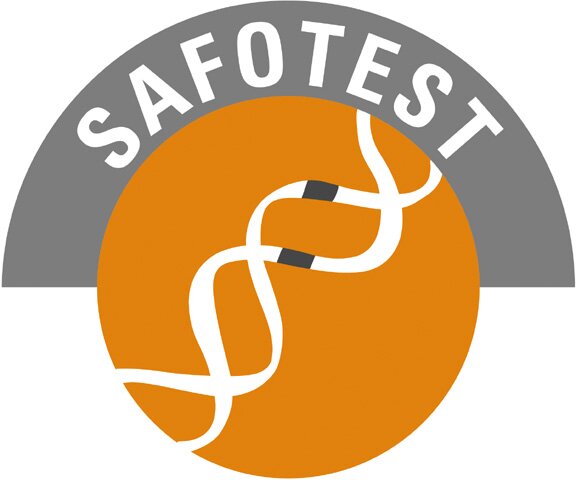
New methods for the safety testing of transgenitic food

|
Results SAFOTEST
New methods for the safety testing of transgenitic food |
Progress Report 1 RTD-Project SAFOTEST
Co-ordinator: Dr. Ib Knudsen, Institute of Food Safety and Toxicology, Denmark
Objective To develop and validate the scientific methodology for assessing the safety of GM foods. Constructs for production and secretion of recombinant protein for use in in vitro and in vivo studies DNA constructs for expression of snowdrop lectin (GNA) and Phaseolus vulgaris agglutinin E-form (PHA-E) in the heterologous expression system Pichia pastoris have been prepared. Fully functional GNA and PHA-E have been successfully produced in Pichia pastoris. In both cases, the PHA-E signal peptide directed correct processing and secretion of the lectins into the culture supernatant. N-terminal sequencing data confirmed correct processing of the proteins by the Pichia proteases. Purification of recombinant GNA and PHA-E was made possible by affinity chromatography on a mannan and thyroglobuline matrix column, respectively. Haemagglutination studies on rabbit erythrocytes showed no significant differences in functional activities between the recombinant proteins when compared to the plant-isolated lectins.
Optimisation of yield It was confirmed that the yield of recombinant GNA and PHA-E obtained in low cell density shake flask fermentation is approximately 1.5 µg/ml and 0.5 µg/ml, respectively. In order to obtain the amount of protein required for this project, optimisation of production is necessary. Strategies have been performed for the optimisation of synthesis and secretion of heterologeous proteins in P. pastoris. These include the selection of high-producing P. pastoris and selection of clones using ELISA.
Constructs for transgenic rice material for use in in vitro and in vivo studies DNA constructs for the expression of GNA and BtCry1Ac (Subcontractor Prof. Christou, John Innes Centre, Norwich, U.K.) in transgenic rice under the control of the constitutively expressed maize ubiquitin promoter have been prepared. Transgenic rice plants have been generated and selection on the basis of expression levels is under way. DNA construct for expression of PHA-E in transgenic rice is almost complete.
Compositional analysis of transgenic and parental rice material Selection of the NIR spectrometer most appropriate for the project, with exemplary demonstration of the applicability of NIRS for proximate analysis and fingerprinting in rice material has taken place. Evaluation of sample preparation (grinding, freeze-drying) and extraction procedures for metabolite profiling is in progress.
Preliminary in vivo studies A preliminary rat feeding study was performed to see how acceptable raw rice was for rats. Groups of six rats were fed 0, 40 or 60% of raw ground brown rice incorporated in a purified diet for 28 days. No difference between groups in water intake, feed consumption and body weight was observed. At autopsy, no macroscopic changes were seen. It was concluded that Wistar rats readily tolerate up to 60% of raw ground brown rice in a purified diet for 28 days.
Preliminary in vitro studies By subtractive hybridisation of cDNA from undifferentiated or differentiated Caco-2 cells with cDNA from HeLa, two cDNA libraries in vector pGEM-T Easy were generated. From each of the two libraries, 2000 independent E. coli clones were analysed for their plasmid content by PCR. The size and quality of the PCR products were determined by agarose gelelectrophoresis.
|
|
|
|
Latest update: 17-12-2002 by I.M. van Oostwaard |